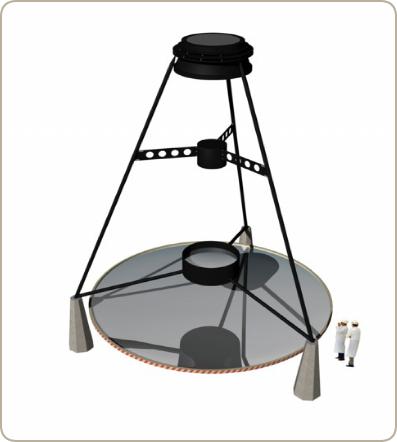 |
|||
 |
||||
 |
|
While the technology needed for large liquid mirrors has been developed and proven with the LZT, the weather on the west coast of Canada is a limiting factor. If a similar telescope could be built at a premier astronomical site, it would be scientifically more productive. This goal is being realized with the ALPACA project. The Advanced Liquid-Mirror Probe for Astrophysics, Cosmology and Asteroids will combine an 8-metre liquid primary with wide-field secondary optics to produce a large 3-degree imaging field. Equipped with a mosaic camera with as many as 240 CCDs, ALPACA will be able to observe 1000 square degrees of sky. Unlike conventional telescopes, it will observe this region over and over, every night, detecting variable objects such as distant supernovae and nearby asteroids, and gradually building up very deep images of faint galaxies. Further details can be found on the main ALPACA web pages.
ALPACA may be the first step towards an even more ambitious project, the Large-Aperture Mirror Array (LAMA). LAMA would employ a unique optical design that enables liquid mirror telescopes to point and track, and merge the light from many individual telescopes.